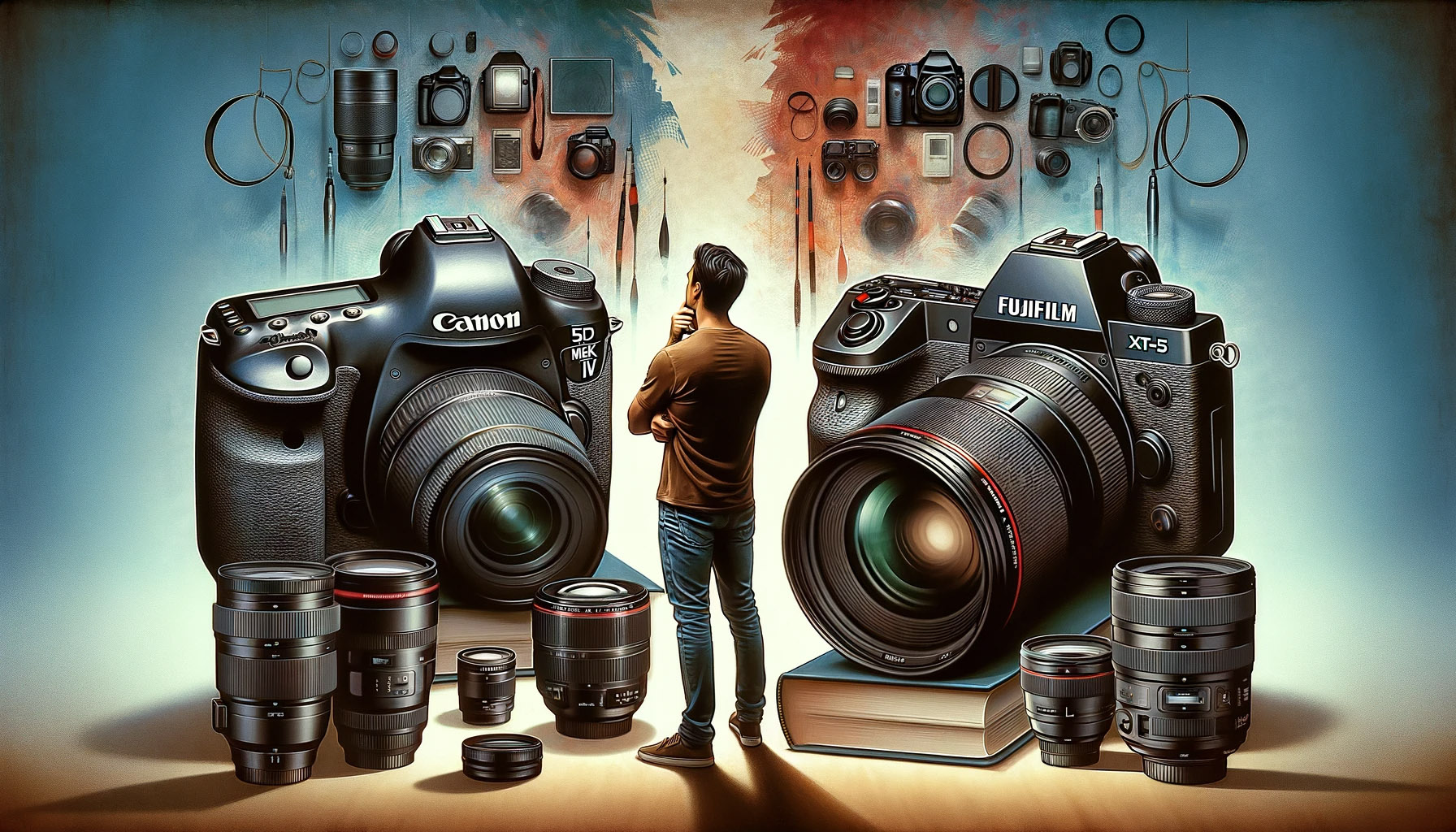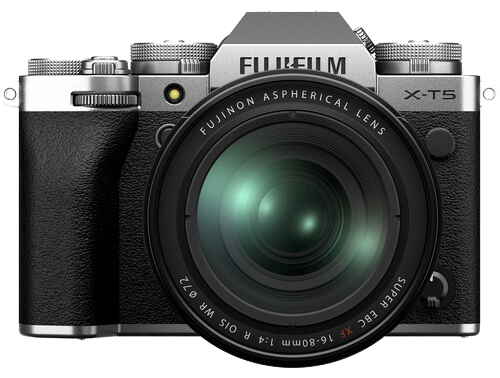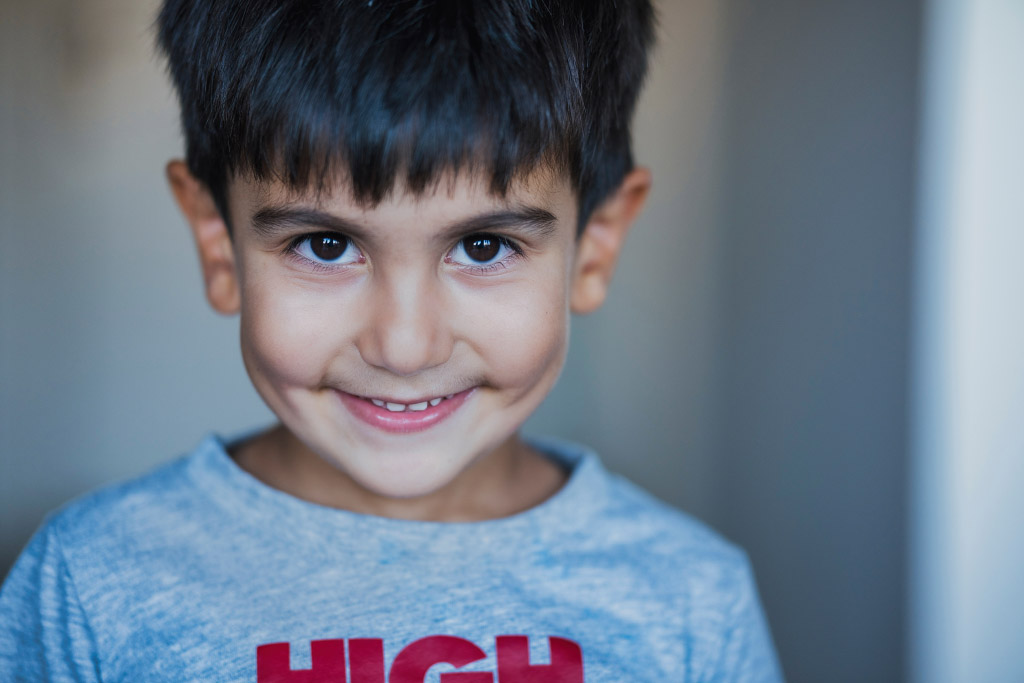Today, I am excited to share an important change in my photography equipment - my transition to the Fujifilm X-T5. When I first got my DSLR camera, the Canon 40D, back in September 2010, I was overjoyed. After more than 13 years of loyalty to Canon DSLRs, this change is not just about new equipment; it signifies embracing a new era in photography for me.
Mirrorless Revolution: Why I Chose the Fujifilm X-T5
After spending over thirteen years with DSLRs, I was finally drawn to the appeal of mirrorless technology. In my decision to transition to the Fujifilm X-T5, advanced features and the industry's shift towards mirrorless systems played a role. I miss the familiar feel and directness of the optical viewfinder, but the X-T5's electronic viewfinder offers its advantages, such as real-time exposure simulation. The X-T5's electronic viewfinder shows me exactly what the sensor sees in terms of exposure, white balance, and depth of field. This helps me capture the look I want in the camera and gives me more confidence in post-processing. However, the image you see in the electronic viewfinder is slightly delayed since it's generated digitally after all. Also, despite its high resolution, it's made up of pixels, and it's not as easy to capture the sharpness of the optically seen image. This might be noticeable to photographers accustomed to optical viewfinders, but I don't think newcomers to photography will notice.

Compactness: A Blessing for Travelers and Hikers
The compact size and lightweight nature of the Fujifilm X-T5 immediately caught my attention. With a weight of only 550 grams, including the battery, and when you add my general-purpose lens, the 16-80, at 440 grams, the total weight is 990 grams. In contrast, the Canon 5D Mark IV weighed 890 grams with my general-purpose lens, the 24-105, which weighed 670 grams. So, we're talking about a system that is approximately one-third lighter than the previous one. As someone who frequently ventures into nature for photography, carrying a heavy DSLR and lens combination on long hikes had started to intimidate me in recent years. With the X-T5, I hardly notice the weight when I'm out trying to capture the perfect landscape. The ease of carrying this camera has made my photography trips more enjoyable and less cumbersome. My back appreciates it too! I also got a small wrist strap from Pgytech Wrist Strap to keep the camera on my wrist while I'm on the move. Knowing that it won't fall while I'm carrying it is another reassuring factor. I also have a BlackRapid Sport Breathe neck strap for when I use heavier lenses, but I've found that I prefer the wrist strap for its convenience.

Retro Design and Practicality
Photography should be enjoyable at its core, shouldn't it? The retro design of the X-T5 reminiscent of classic film cameras brings nostalgia and joy. The mechanical dials are not only visually appealing but also offer a tangible and intuitive way to adjust settings instantly. This tactile interaction with the camera adds a layer of connection to the shooting process that digital menus simply can't mimic. Turning the real dials to change shutter speed or ISO provides satisfying physical feedback. It's one of those little things that make photography more gratifying. It 's hard to describe this feeling; you must experience it. You'll want to pick up this camera and take photos every chance you get!
Size of the Sensor: My Concerns Turned Out to Be Unfounded
Switching from a full-frame sensor Canon 5D Mark IV to an APS-C sensor might seem like a downgrade. I used to enjoy the benefits of a full-frame sensor when I first transitioned from my Canon 7D Mark II to the Canon 5D Mark IV. Now, would this change result in a loss of image quality in terms of ISO performance and bokeh? I had concerns about that. However, the X-T5's X-Trans CMOS 5 HR BSI Sensor quickly dispelled all my doubts. Especially in low-light conditions up to ISO 12800, the image quality is exceptional. The high ISO performance of this smaller sensor amazed me with advancing technology. Likewise, its dynamic range allows for impressive recovery of details in shadows, permitting me to salvage details in high-contrast challenging scenes. So, one might ask, do I really need a full-frame sensor anymore?
40 MP: Expanding Horizons
The 40 MP sensor of the X-T5 represents a significant 33% increase compared to my previous 30 MP Canon 5D Mark IV. While the sensor size is approximately 50% smaller, the increase in resolution due to pixel density doesn't seem to negatively affect image quality. You might say I don't need this high resolution, but this increase in resolution offers incredible cropping flexibility, especially crucial for capturing distant subjects in wildlife photography. Being able to crop significantly while preserving sufficient detail opens up new creative possibilities. You can isolate subjects when needed or keep your perspective farther away. This flexibility may allow me to capture photos that I couldn't before. However, keep in mind that the 40 MP results in larger file sizes. Especially uncompressed RAW files are over 100MB each.

Lens Transition: A New Beginning
Changing camera systems meant bidding farewell to my Canon lenses; this was both an emotional and a challenging process. However, my new Fujinon XF16-80mmF4 R OIS WR and Viltrox Pro Series 75mm F1.2 XF lenses proved to be perfect for landscapes, travel, and portrait photography. In my Canon 5D Mark IV setup, I used the 24-105 f/4 lens for general use. In the new system, it has been replaced by the 16-80 f/4 lens. When we consider that the focal range of this lens is equivalent to 24-122 in 35mm terms, it means I've gone from 105 to 122 on the zoom side while keeping a constant aperture of f/4. This actually makes it more convenient and practical than changing lenses. This is especially advantageous for travel photography. The 16-80mm lens, with its various focal lengths and weather resistance, has become my new favorite for landscapes, cityscapes, and environmental portraits. I'm constantly discovering new possibilities with it on my X-T5. The Viltrox 75mm f/1.2 lens exceeded my expectations for portrait photography. Viltrox was a brand I had never heard of before. However, reading reviews and seeing sample photos convinced me to purchase this reasonably priced lens. And what a lens it is! The build quality is top-notch, and it gives the same premium feel as the world's most expensive lenses. With its incredible f/1.2 aperture and 75mm focal length, it produces stunning portraits with beautiful bokeh. You can see a sample photo below. I'm very satisfied with this lens. Viltrox's sharpness, bokeh quality, and overall image rendering are exceptional, and I enjoy photographing people with it. The subject isolation and dreamy out-of-focus areas created by this lens amaze me. Plus, it's budget-friendly, making it an irresistible choice for Fuji photographers. Finally, I want to mention the adapter that allows me to use my existing Canon EF lenses on the new Fuji X-T5 body. While researching how I could continue using my current lenses, I came across the Fringer EF-FX Pro III adapter, which does exactly what I wanted. I haven't had the chance to use this adapter extensively yet, but I'll write a new review here once I do.
7-Stop In-Body Stabilization: A Game-Changing Feature
One of the standout features of the X-T5 is its advanced 7-stop in-body image stabilization. This technology has changed the way I shoot, especially in low-light conditions or when using slow shutter speeds for handheld shots. The stability it provides is outstanding, allowing me to capture sharp images even at slow shutter speeds like 1/4 second without motion blur. It grants me the freedom to experiment more with slow shutter artistic effects. Additionally, it helps when shooting at longer focal lengths where camera shake is more pronounced. This feature is particularly useful in scenarios where setting up a tripod isn't possible, allowing for quick movements while still achieving sharp images. The newfound confidence in handheld shooting it has given me ensures that I capture portfolio-worthy photos that I might have otherwise missed. IBIS is undoubtedly a game-changer! However, it's essential to remember that if your subject is moving, you must still adjust the shutter speed accordingly. In such cases, this 7-stop feature may not be as helpful.
In Search of a New Telephoto Lens
While I'm quite impressed with the Fujifilm system, I find myself missing the reach of my Canon 100-400mm telephoto lens. My quest for a similar telephoto zoom lens within the Fuji ecosystem continues. I have my eye on the Fujinon XF100-400mmF4.5-5.6 R LM OIS WR lens. However, the fact that this lens has been in production since 2016, and its technology is starting to show its age, has made me wonder if I should wait a bit longer and invest in a newer technology lens. The alternative to this lens, the Fujinon XF150-600mmF5.6-8 R LM OIS WR lens, is much newer but will always take up a lot of space in the bag due to its internal zoom feature, even at 150mm. Additionally, its aperture isn't as high as I'd like it to be. So, I have yet to decide between these two lenses. Right now, the most significant skill I have in my Canon ecosystem that I don't have in my Fuji ecosystem is the ability to shoot telephoto zoom photos. If I need to shoot bird or wildlife photography anytime soon, I'll have to rent a lens. My quest to find the best telephoto companion for my X-T5 continues! If you have any recommendations on this matter, feel free to reach out to me here.

Conclusion: A New Chapter with Fujifilm X-T5
- Last update date: 12-01-2023 08:09:55 PM

